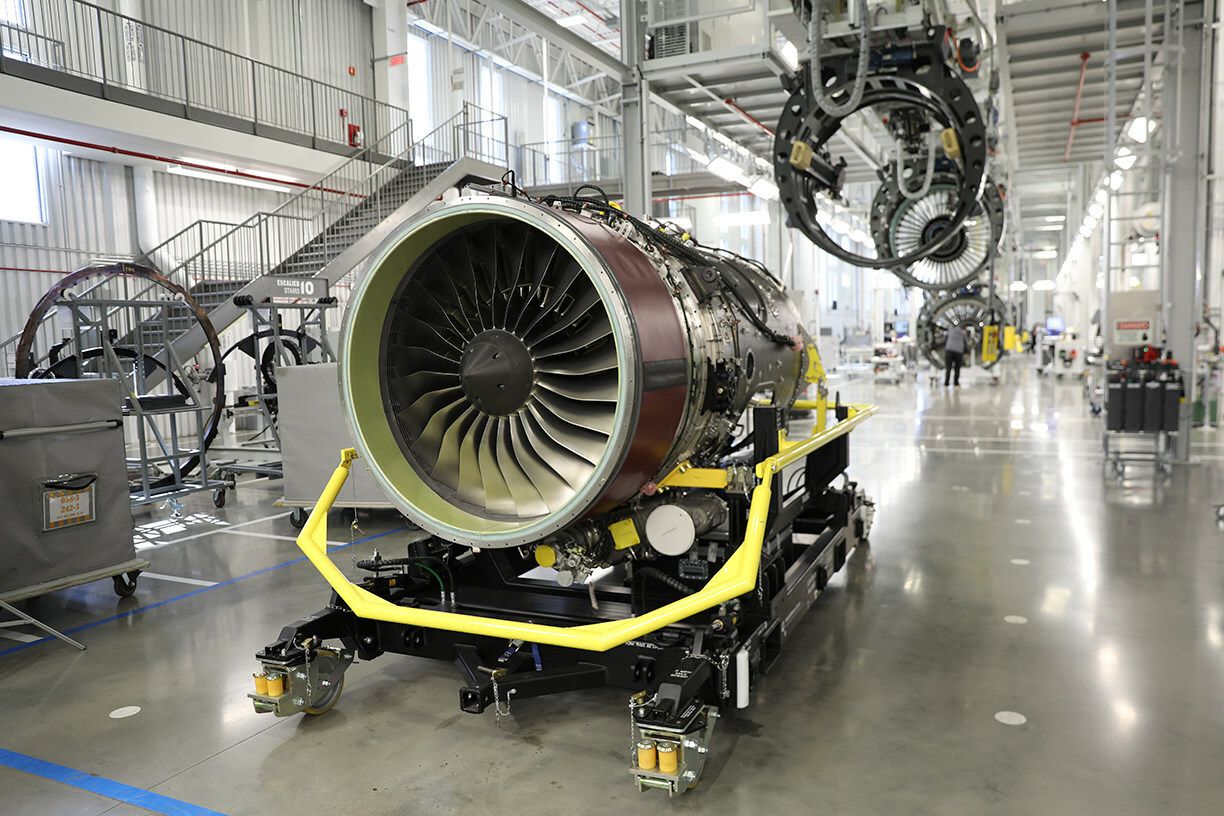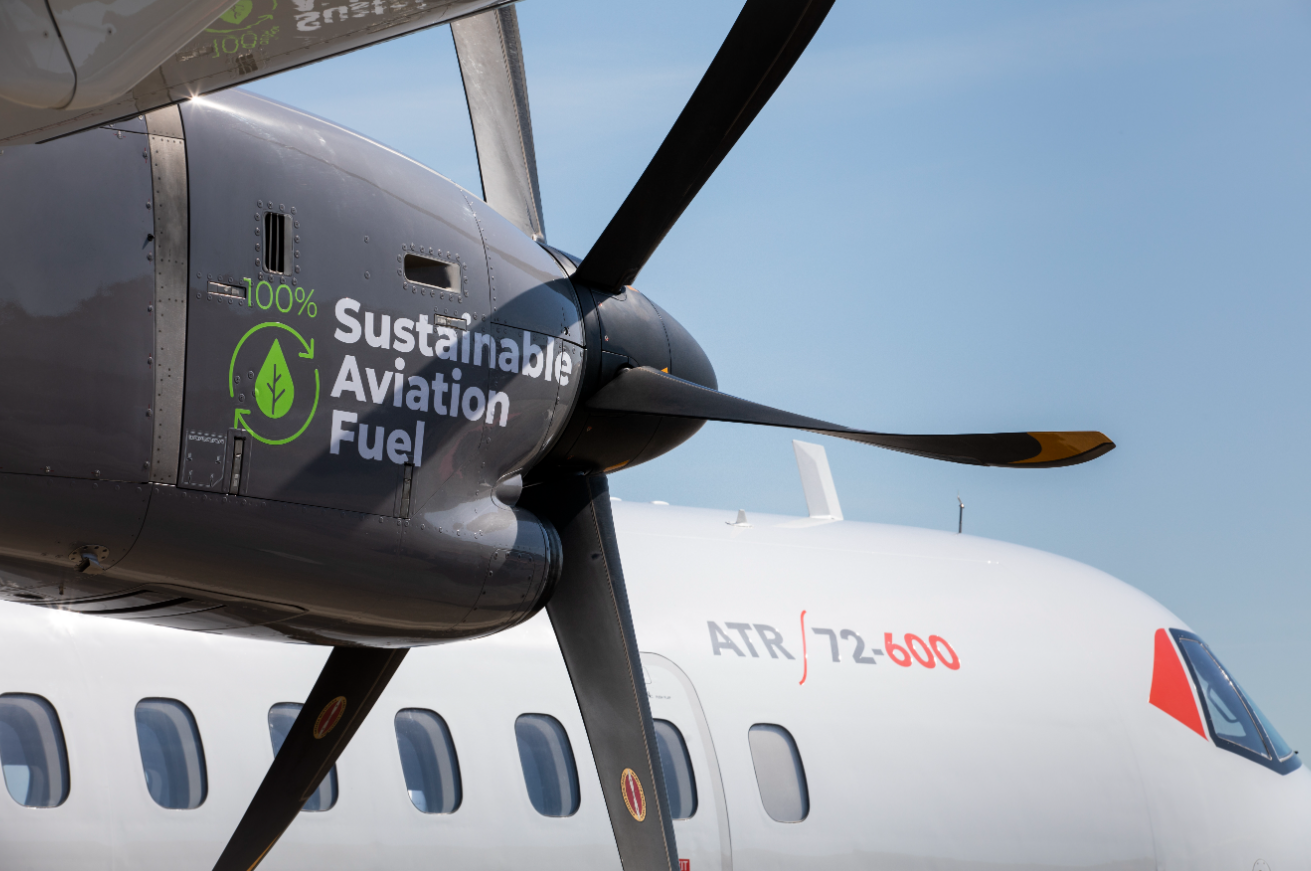Summary
- Pratt & Whitney Canada and Gulfstream Aerospace have completed the first 100% biofuel-powered transatlantic crossing between Savannah and Farnborough.
- The biofuel used in the flight has up to 70% lower carbon emissions than conventional jet fuel and was provided by World Fuel Servies.
- Pratt & Whitney Canada’s engines have already been approved for operation with up to 50% SAF blended fuel, and this successful test flight opens up the possibility for the approval of higher SAF usage.
In collaboration with US-based business jet manufacturer Gulfstream Aerospace, Pratt & Whitney Canada has confirmed it completed the first fully sustainable aviation fuel (SAF) powered transatlantic flight on November 19.
Greener skies ahead?
Utilizing a Gulfstream G600 business jet (N720GD) powered by two Pratt & Whitney’s PW815GA turbofan engines, the engine manufacturer was able to use sustainable biofuel to power a flight between Savannah-Hilton Head International Airport (SAV) in Georgia and Farnborough Airport (FAB) in the UK.
According to Pratt & Whitney, the fuel is sourced from Hydro-process Esters and Fatty Acids produced by World Fuel Services, which offers up to 70% lower lifecycle carbon emissions than conventional jet fuel.
Photo: Pratt & Whitney
In a statement shared by the engine manufacturer, Anthony Rossi, Marketing VP at Pratt & Whitney Canada, celebrated the company’s achievement in enhancing sustainable jet operations. Rossi noted that all Pratt & Whitney Canada engines have already been approved for operation with up to 50% SAF blended fuel; however, this weekend’s test flight opens up the possibility for the approval of fully biofuel-powered flights in the future.
“With this transatlantic flight, we are effectively demonstrating both engine and aircraft functionality in a fully operational setting to support future specifications for 100% SAF, which will be critical to achieving a more sustainable future of net-zero CO2 emissions for aviation in the decades ahead.”
Gulfstream President Mike Burns noted a similar sentiment, outlining Pratt & Whitney’s engines in advancing reliability and sustainability for business jet operations since its introduction in 2019.
“The performance of the aircraft on the first transatlantic flight using 100% SAF showcases our commitment to leading the industry in sustainability innovation through new aircraft and propulsion technologies, while promoting environmentally responsible practices.”
Further collaborations
Alongside Gulfstream, Pratt & Whitney has launched programs with both ATR and Airbus to develop 100% SAF-powered commercial flights.
In February, Pratt & Whitney and ATR announced they would be working together on gearing up the ATR 42 and 72 PW127 series turboprop engines for SAF operations as part of the aircraft manufacturer’s goal of hitting carbon neutrality by 2050. The ongoing project is expected to run through the next two years, with Pratt & Whitney projecting the development of a 100% SAF-approved turboprop engine by 2025.
Photo: ATR
Airbus and Pratt & Whitney entered into a similar collaboration in April to establish the feasibility of constructing a dedicated SAF production plant in Quebec and, eventually, power an Airbus A220 with 100% SAF fuel.
Canada does not currently have significant infrastructure for SAF production; however, the government is eyeing expansion of its biofuel capabilities as it targets 30% SAF usage by 2030.
Airlines and aviation groups have expressed skepticism over the achievability of many SAF targets. According to the International Air Transport Association (IATA), despite heavy investment and development in SAF production over the past three years, production levels remain low, with biofuel accounting for just 0.1% of all worldwide jet fuel volumes.
Current SAF usage is also around two to nine times more expensive than jet fuel, according to research by Morningstar – while tax credits may push down costs as production ramps up, the overwhelming demand for the shift to biofuel and limited reserves could push up airfares in the short term.
What are your thoughts on Pratt & Whitney and Gulfstream’s sustainable collaboration? Let us know in the comments.
Source: FlightGlobal




.jpg)


